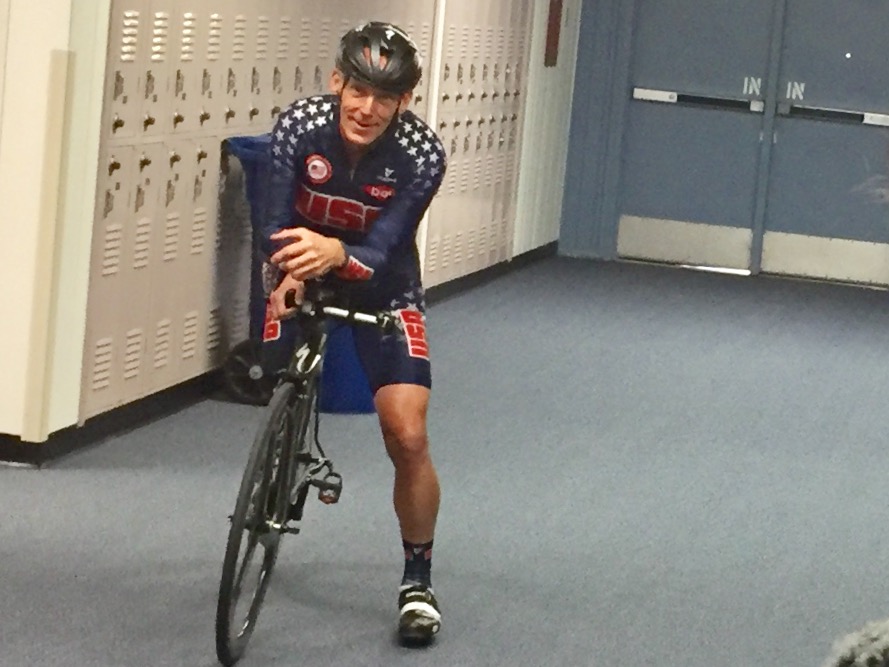
Story & photo by Joyce Coronel
Todd Key knows what it’s like to be different, to be shunned. At age 7, he suffered a devastating fracture that landed him in the hospital for nine months and left him unable to use his right arm.
“I became the guy in the school the bullies liked to pick on,” Key told a gym packed with Gilliland Middle School students, where the administration had invited Key to speak. Middle school can be an awkward phase, fraught with a deep desire to fit in as well as the bullies and cliques that make the climb seemingly insurmountable. That’s why Gilliland’s principal, Jolyn Gibbons, reached out to Key. He’s well-acquainted with overcoming obstacles. He’s not only without the use of his right arm, he also lost his right leg above the knee at age 17 after a bout with cancer.
A Paralympic cyclist with Team USA, Key has won 20 medals for the sport, including the national championship this year, the third in a row for a man with a seemingly indomitable spirit. “Our special guest speaker has overcome some steep odds,” Gibbons said as she introduced him to the gymnasium packed with students.
The crowd began cheering before Key, clad in his Team USA navy blue uniform, even picked up the microphone. “Obviously you can see that I am not your typical person,” Key said. “There is a lot of physical stuff going on with me, but what you don’t see are the struggles. For a lot of years I didn’t know if I was going to make it, if I was going to live—if I wanted to live. In some of those years I was as old as you guys.”
With a matter-of-fact delivery, Key demonstrated how his prosthesis is removed and snaps back on,
then showed how his riding foot can be removed in order to replace it with a running foot. Students applauded as he jogged laps around the basketball court, then returned to explain his specially adapted bicycles. And though he spent most of his time demonstrating how his leg and his bikes work, his larger message was framed especially for middle-schoolers. Those years, he acknowledged, are tough on people who look and seem different.
“It’s your job and my job now to help those people get through, because everybody—no matter how much they pretend that everything is so wonderful—everybody needs some help.” He encouraged students to find something they love to do, something that they could start working on and thereby develop skills and goals.
“You couldn’t have told me when I was 17 that I would be riding this bike and traveling around the world. I never would have had that vision at 17, but I am able to now because of the help I got along the way.”
Adrian Duran, an eighth-grader, said he learned something from Key’s presentation. “It made me think anybody can do anything because he showed us how he rides his bike. If you put your mind to it, you can do it. “

